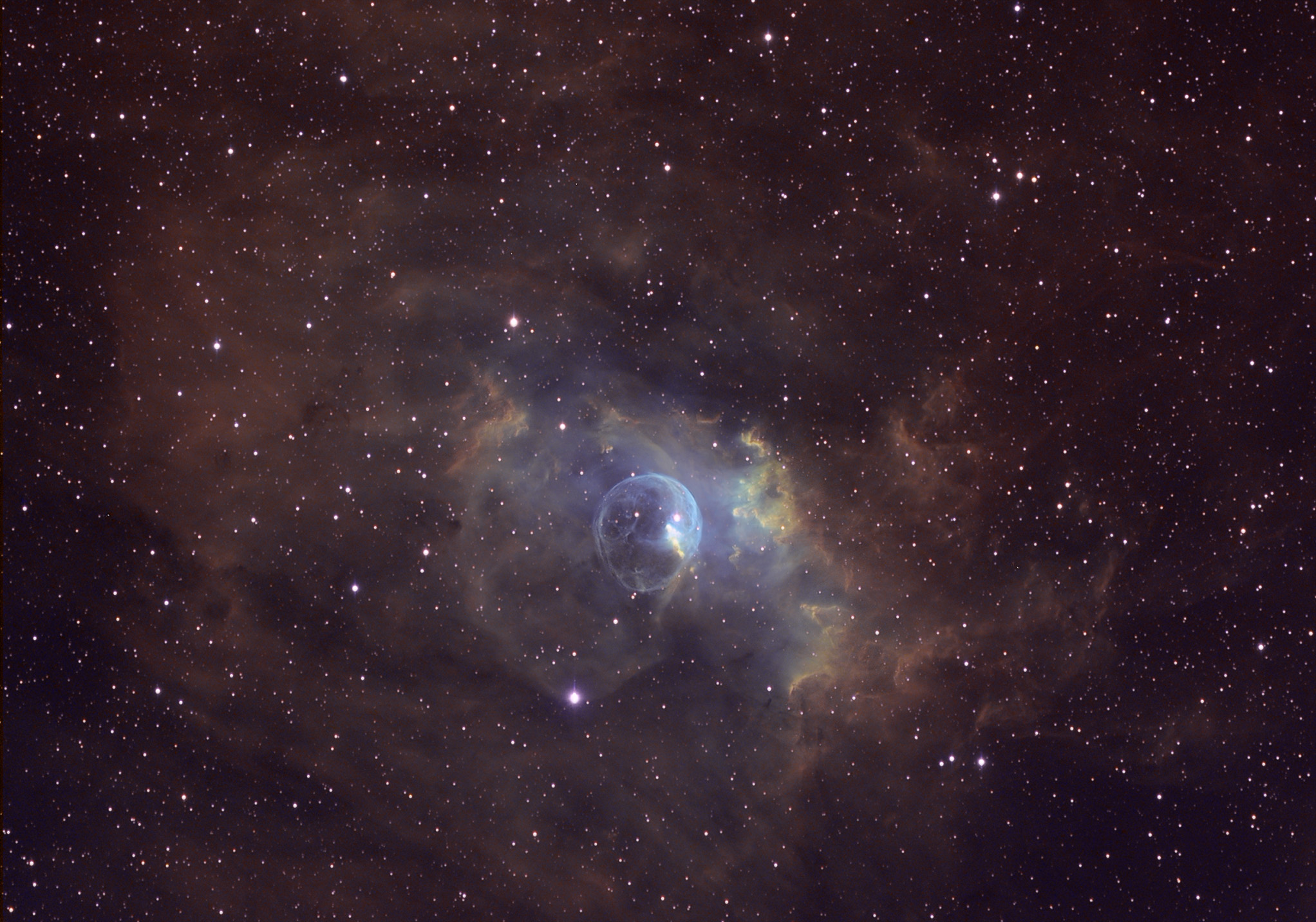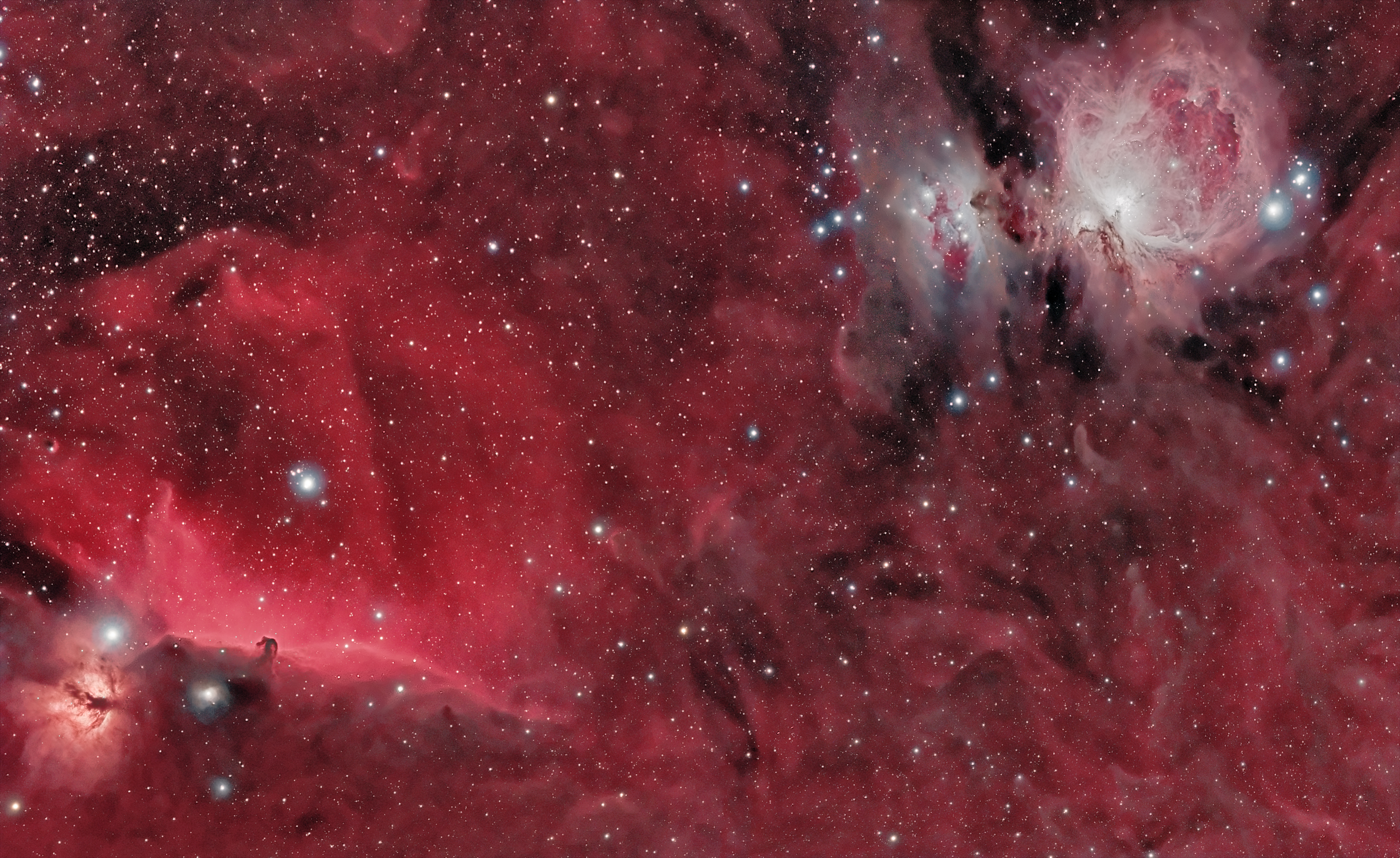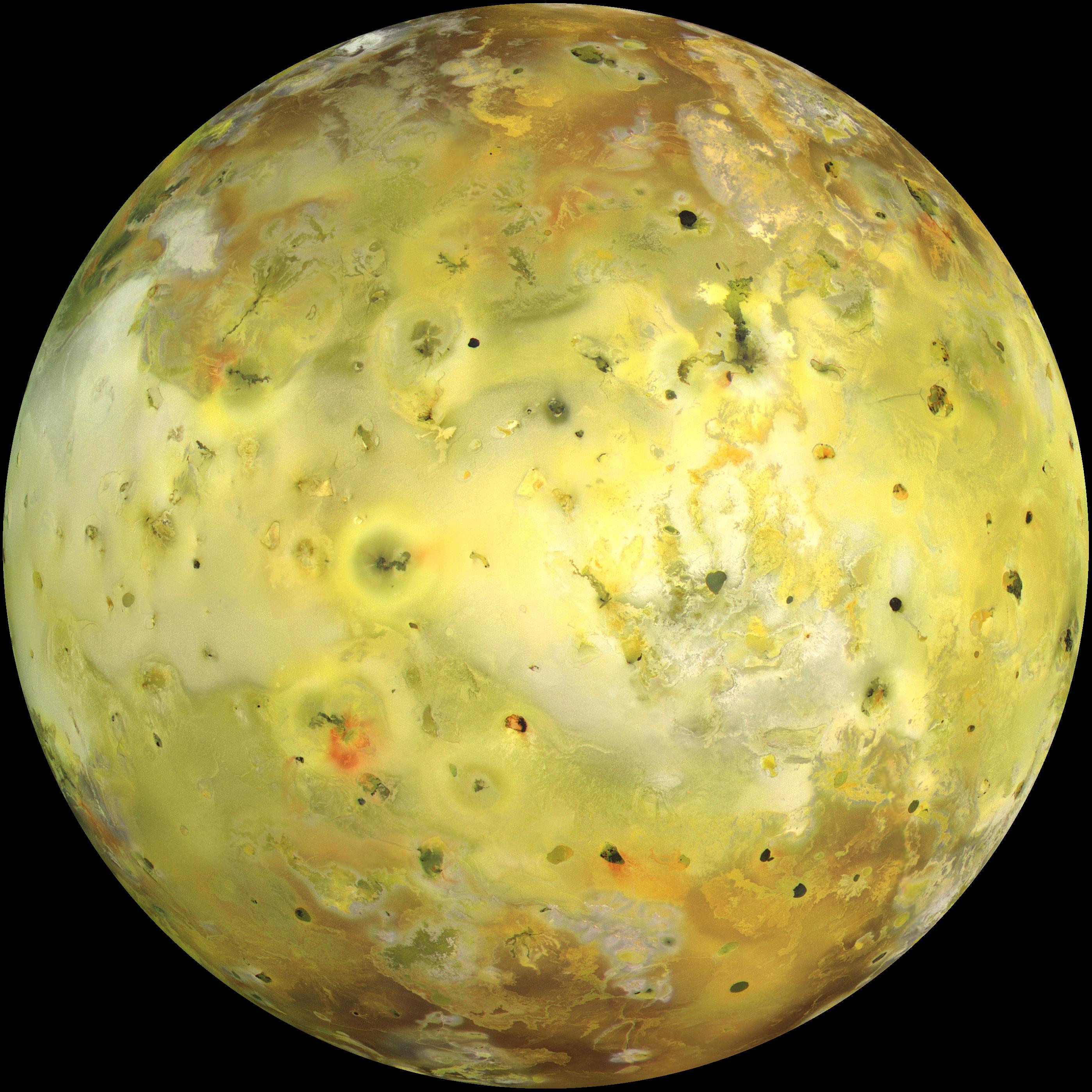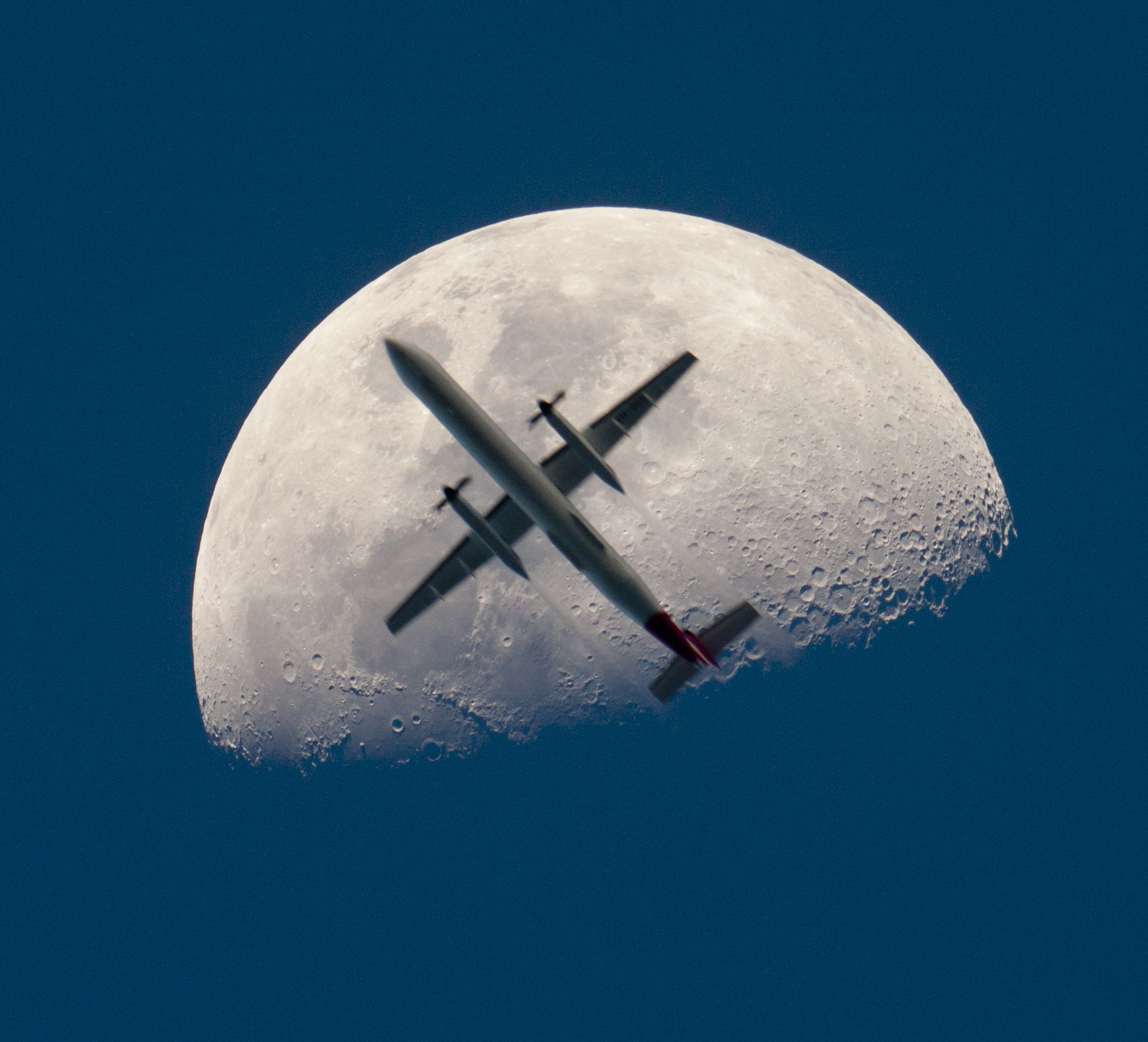The Bubble Nebula
Explanation: Blown by the wind from a massive star, this interstellar apparition has a surprisingly familiar shape. Cataloged as NGC 7635, it is also known simply as The Bubble Nebula. Although it looks delicate, the 10 light-year diameter bubble offers evidence of violent processes at work. Above and right of the Bubble's center is a hot, O-type star, several hundred thousand times more luminous and approximately 45 times more massive than the Sun. A fierce stellar wind and intense radiation from that star has blasted out the structure of glowing gas against denser material in a surrounding molecular cloud. The intriguing Bubble Nebula lies a mere 11,000 light-years away toward the boastful constellation Cassiopeia. A false-color Hubble palette was used to create this sharp image and shows emission from sulfur, hydrogen, and oxygen atoms in red, green, and blue hues. The image data was recorded using a small telescope under clear, steady skies, from Mount Wilson Observatory.













